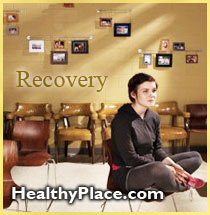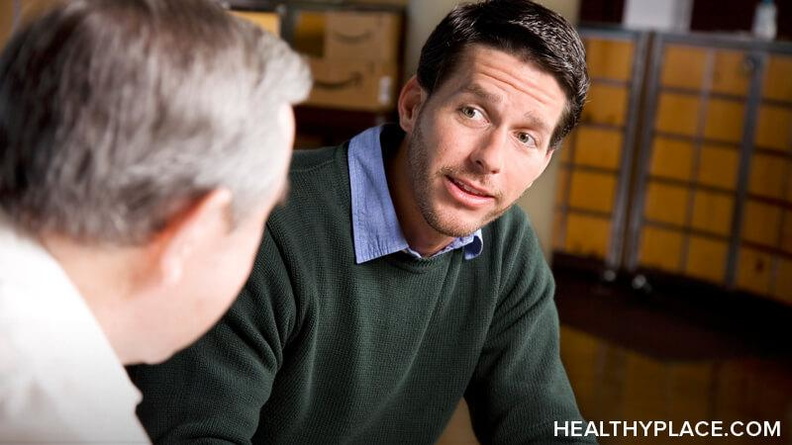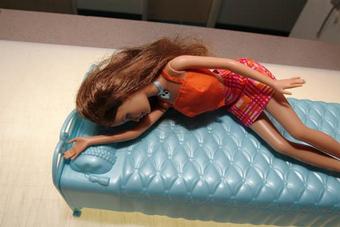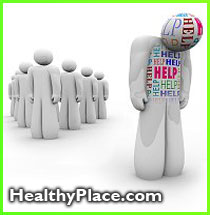The Seven Issues in Recovery From Social Anxiety

To reap the comfort that you seek, you will need to persist in practicing various skills using concentrated effort over several months. Certain characteristics of social anxieties, when combined, require that you use this degree of thoroughness. Here are seven of the most important distinctions regarding recovery from social phobias.
1. You will need to work on several skills at once.
You enhance your progress in mastering anxiety when you follow several principles regarding facing your fears. One principle is to break down your skills into manageable chunks of activities. As you accomplish early tasks, you can add complexity to your practices. A person with social anxieties, who worries predominantly about the critical judgments of others, will not typically have the chance to practice simple skills before he faces more complex situations.
A person learning to face social fears must master the same type of tasks as someone with panic attacks. However, he often must cope with them while simultaneously interacting with others. The skills needed to manage social interactions are inherently more sophisticated than those needed to sit in a crowded church, shop for groceries or tolerate an elevator ride to the fifth floor. It is this social interaction that adds significant complexity and therefore stress to the event. For instance, when giving a speech, he must practice tolerating uncomfortable physical symptoms, quieting his fearful thoughts, stopping himself from analyzing his every move, reducing his preoccupation with the reactions of his audience AND performing the complex skills needed to deliver a logical presentation.
2. You may participate in some anxiety-provoking events before you feel ready.
A similar principle for overcoming anxiety is to gradually face your feared situations as you are learning your coping skills. It is best to begin with lower grade fears and work your way to the more difficult events.
When you have social anxiety, events that are high up on your list of threatening situations may take place before you have mastered your lower level tasks. There are two primary ways that this occurs.
First, you may need to participate in some events simply because of your current responsibilities. For example, you are invited to a party for your close friend. Or you must meet with three managers about a new project. Or you are assigned an intern who must observe your work at the office. Any of these encounters can place you in an uncomfortable scene before you feel ready.
Second, distressing social encounters can pop up spontaneously and catch you unaware. Your boss may request a last-minute office meeting, you could be called on to give an informal report, an acquaintance might bump into you while you are eating lunch and ask to sit down. Suddenly you are thrust into a highly stressful event without planning your coping responses.
3. It's not so easy to schedule practice sessions.
Frequent practice of your skills within a limited time period is another important principle for learning new behaviors. Some socially uncomfortable situations, however, don't occur on a routine schedule. If you want to practice formal presentations, job interviews or taking exams, you may have to wait weeks or months for opportunities. Finding creative ways to simulate these events will be important additions to your practice. (I'll offer some suggestions later.)
4. Some socially uncomfortable events are brief contacts.

One of the goals of practice is to develop habituation: by remaining in anxiety-provoking situations for prolonged periods, your intense anxiety reaction gradually decreases. As you become less anxious, you can think more clearly and perform more comfortably. That's why I encouraged you to create practices that last from forty-five to ninety minutes.
However, a number of uncomfortable social contacts are brief, lasting seconds or a few minutes at most. Looking someone in the eye as you pass, saying hello in the hall at work, shaking hands, signing a credit card slip, answering a question in class, bumping into someone you know, asking someone for a date -- all these events can instantly generate high distress, but then end just as quickly.
Again, you may need to create simulations to practice these skills. For example, if you have difficulty writing in public, you can ask several friends to look over your shoulder while you sign your name fifty times.

5. Facing and tolerating the fearful event is not enough.
Phillip was a 53 year old engineer who came into treatment for his severe social phobia. His grave fears of writing and drawing in front of his colleagues cost him his job. He was sure that all who observed him would ridicule his shaking hands and "illegible" writing. By the time I saw him, he was on disability and couldn't publicly sign his name or lift a spoon, fork or glass to his mouth unless he had previously taken two shot glasses of bourbon. One afternoon in treatment, he took a giant step. I prearranged an agreement with the clerks in six stores, then Phillip entered each store, approached the clerk, asked if he could sign his name as the clerk watched, and then proceeded to do so. Relative to Phillip's severe limitations, this was a monumental task. I waited in the parking lot, and as he approached I asked if he accomplished his goal. Phillip nodded, and when he reached my side, as he held out the writing tablet, his first sentence was, "Look how shaky my writing was!"
This example illustrates that confronting the feared situation is necessary, but insufficient. Many people with social anxieties force themselves to interact with others in their feared situations. They will eat at restaurants, speak in a small group discussion, or answer questions when called on. But, like Phillip, they leave the scene and worry incessantly that they made a fool of themselves or will suffer dire consequences because of their humiliating actions. Along with entering your fearful arenas, you must specifically address your fear of others' judgments and your own harsh self-criticism.
6. You may also need to develop certain social skills.
Some people, in addition to feeling anxious about social interactions, are not confident of what behaviors are most socially appropriate. This is understandable if you have been socially withdrawn most of your life, or if your parents were also inhibited and failed to model interactional skills, or were critical of your social behaviors without instructing you in the correct actions. Such needed skills may include: how to initiate conversation and pastime with others; body posture, facial expressions, and eye contact; formal presentation skills; grooming; and assertive communication.
7. Other problems may get in your way.
Studies of people with social phobia indicate that seventy percent also suffer from at least one other psychological problem. Sixty percent have another phobia and forty-five percent have agoraphobia or panic disorder. Almost forty percent experience some form of depression. One study found that seventy percent meet the criteria for avoidant personality disorder. (Avoidant traits include pervasive social anxiety, loneliness, low self-esteem and the belief that others dislike you or will take advantage of you.) In addition, people sometimes use alcohol as a means of coping with the problem. Approximately twenty percent of those with social anxieties turn to alcohol in an attempt to self-medicate.
There are many ways in which you can help yourself overcome your social discomfort. In the following pages I will outline a positive approach based on the principles of this book. However, if you think that your difficulties are more than you can manage while using the support of your family and friends, then turn to a mental health professional who specializes in the treatment of social phobias using cognitive-behavioral therapy. There is now a growing number of caring and competent specialists who treat these problems.
Also, specialists sometimes recommend medications to assist you during treatment.
next: Fear of Flying: Summary
~ back to Anxieties Site homepage
~ anxiety-panic library articles
~ all anxiety disorders articles
APA Reference
Staff, H.
(2009, January 10). The Seven Issues in Recovery From Social Anxiety, HealthyPlace. Retrieved
on 2026, January 13 from https://www.healthyplace.com/anxiety-panic/articles/the-seven-issues-in-recovery-from-social-anxiety


 The nature of social anxieties requires that you focus
The nature of social anxieties requires that you focus  Parents are usually the first to recognize that their child has a problem with emotions or behavior. Still, the decision to seek professional help can be difficult and painful for a parent. The first step is to gently try to talk to the child. An honest open talk about feelings can often help. Parents may choose to consult with the child's physicians, teachers, members of the clergy, or other adults who know the child well. These steps may resolve the problems for the child and family.
Parents are usually the first to recognize that their child has a problem with emotions or behavior. Still, the decision to seek professional help can be difficult and painful for a parent. The first step is to gently try to talk to the child. An honest open talk about feelings can often help. Parents may choose to consult with the child's physicians, teachers, members of the clergy, or other adults who know the child well. These steps may resolve the problems for the child and family.
 My educated guess is that the brains of about twenty percent of the population have a more difficult time than the average person in tolerating uncertainty regarding risk. This, of course, can put them at a serious disadvantage, since living demands risk. It is no wonder, then, that so many people develop anxiety problems. They worry because their brain is demanding closure on a specific issue. Their mind says, "This is how it must turn out for me to feel secure. And I must feel secure. Do I know for certain it will turn out this way?" It is as though they require a 100% guarantee that they will encounter zero risk. That is simply too much to ask of life. If you intend to go up against one of the most powerful forces of the natural world -- that is, continual change -- you will have a tough time winning. Listen to these expectations of life and you will see what I mean. The person with panic attacks, phobias or social anxieties asks such questions as:
My educated guess is that the brains of about twenty percent of the population have a more difficult time than the average person in tolerating uncertainty regarding risk. This, of course, can put them at a serious disadvantage, since living demands risk. It is no wonder, then, that so many people develop anxiety problems. They worry because their brain is demanding closure on a specific issue. Their mind says, "This is how it must turn out for me to feel secure. And I must feel secure. Do I know for certain it will turn out this way?" It is as though they require a 100% guarantee that they will encounter zero risk. That is simply too much to ask of life. If you intend to go up against one of the most powerful forces of the natural world -- that is, continual change -- you will have a tough time winning. Listen to these expectations of life and you will see what I mean. The person with panic attacks, phobias or social anxieties asks such questions as: Be aware of the teen who gains too little weight, especially the teenage girl who begins to lose weight rapidly yet still complains she is fat. Young girls may worry about the physical changes that puberty brings, partly in response to society's emphasis on thinness. Full hips and breasts may make them feel "fat," and they can get caught up in behavior patterns known as eating disorders.
Be aware of the teen who gains too little weight, especially the teenage girl who begins to lose weight rapidly yet still complains she is fat. Young girls may worry about the physical changes that puberty brings, partly in response to society's emphasis on thinness. Full hips and breasts may make them feel "fat," and they can get caught up in behavior patterns known as eating disorders.